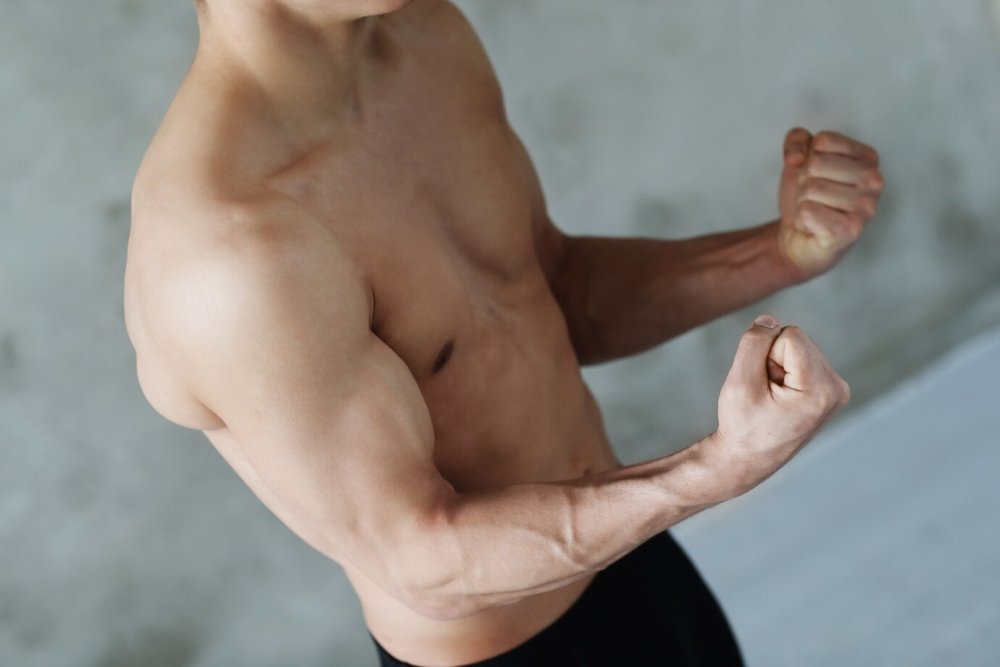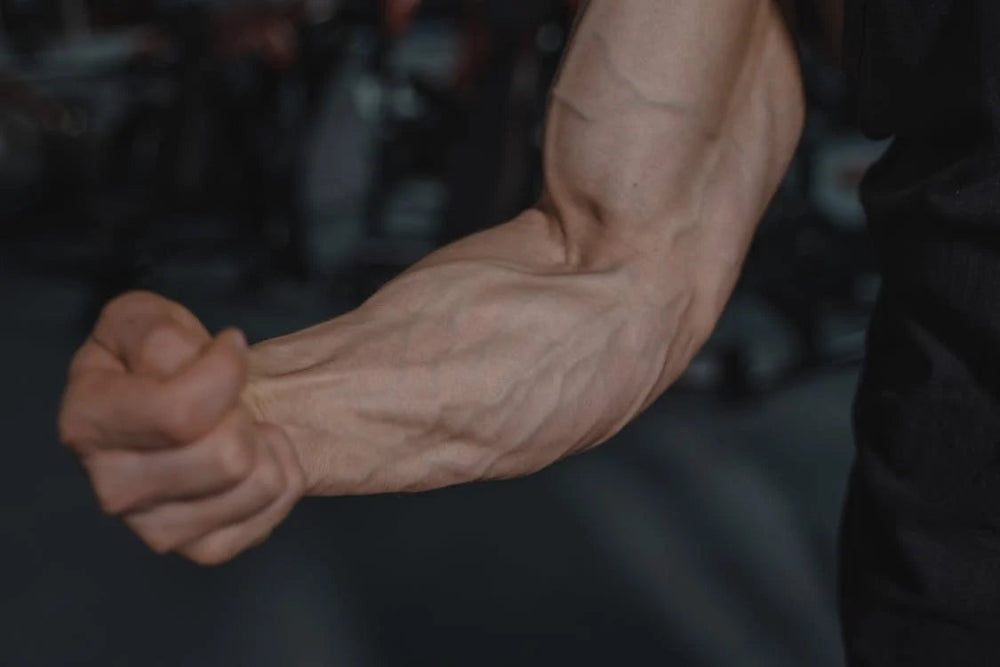For some of us, small wrists can feel like a mystery. No matter how many push-ups we crank out, they just don’t seem to get any bigger.
But hey, small wrists don’t mean you’re weak or lacking in strength.
It’s all about understanding why they’re small and what (if anything) you can do about it.
Ready to crack the code on those dainty wrists?
Why Are My Wrists So Small?

Here are a couple of reasons why your wrists are thin and small:
1. Genetics
The size of your wrists is often determined by your genetic makeup.
Just like height or eye color, the width of your bones and overall wrist structure is inherited from your parents. If small wrists run in your family, it’s likely you’ll have a similar build.
This doesn’t mean you’re unhealthy, it’s just how your body is naturally built.
2. Low Body Fat
If you have a lower percentage of body fat, especially in your limbs, your wrists may appear smaller.
Since there's less fat to add bulk to the area, the natural bone and muscle size is more noticeable.
While having low body fat can be beneficial in many ways, it can make certain parts of your body, like your wrists, look slimmer.
3. Underdeveloped Wrist Muscles
The muscles around your wrists and forearms might not be as developed if you don’t engage in regular strength training.
When these muscles are weak or underdeveloped, your wrists can appear smaller. Developing these muscles through targeted exercises can help add some size and strength to the area.
4. Lack of Wrist-Specific Exercises
Many people overlook training their wrists directly. Most workout routines focus on larger muscle groups like the chest, back, or legs, and the wrists don’t get much attention.
Without specific exercises to strengthen and build muscle in your wrists and forearms, they may remain small.
5. Bone Structure and Size
Some people naturally have smaller bones, and this includes their wrists.
If your bone structure is smaller, no amount of exercise or muscle building will drastically increase the size of your wrists. While you can strengthen the muscles around them, the bones will stay the same size.
What To Do To Get Bigger Wrists?

Let’s talk about the solutions to get bigger and heavier wrists:
1. Build Stronger Wrists with the Right Tools
If your wrists feel weak or small, it’s not just about doing more push-ups or wrist curls. You need resistance-based tools that target the right muscles safely and effectively.
Tornado and Dynamo are made for this.
 Tornado trains your wrist, hand, and forearm by using controlled resistance.
Tornado trains your wrist, hand, and forearm by using controlled resistance.
It works the small stabilizer muscles that most gym exercises skip. You’ll feel the difference in a few sessions like more control, better grip, and less strain when lifting or training.
 Dynamo gives you a strong base to build on. It’s simple, adjustable, and gets straight to the point: stronger wrists, thicker forearms, better performance.
Dynamo gives you a strong base to build on. It’s simple, adjustable, and gets straight to the point: stronger wrists, thicker forearms, better performance.
You won’t see results overnight. But if you use these tools 3–4 times a week, your wrists will start to catch up, and by catch up we mean stronger, more solid, and ready to handle more load.
 Hand grippers are small tools designed to strengthen your grip by squeezing them with your hand. Regular use of these can build the muscles in your hands, wrists, and forearms.
Hand grippers are small tools designed to strengthen your grip by squeezing them with your hand. Regular use of these can build the muscles in your hands, wrists, and forearms.
2. Strengthen Wrist and Forearm Muscles
One of the most effective ways to build bigger wrists is by strengthening the muscles around them.
Your forearm muscles connect directly to your wrists, so building up these muscles can add size and strength.
Exercises that focus on your forearms will naturally improve wrist size over time.
3. Perform Wrist-Specific Exercises
To target the muscles around your wrists, exercises like wrist curls and reverse wrist curls are key.
Wrist curls involve holding a weight and flexing your wrist up and down, while reverse wrist curls work the opposite motion.
These exercises isolate the muscles in the wrists and forearms, helping them grow stronger and thicker.
4. Lift Heavier Weights with Compound Movements
Compound exercises like deadlifts and pull-ups not only build overall strength but also engage your forearms and wrists as stabilizers.
These movements require your wrists and grip to support heavy loads, which leads to muscle growth in those areas.
Regularly incorporating these exercises into your routine can increase wrist size and strength.
5. Increase Overall Muscle Mass Through Strength Training
As you build muscle throughout your body, your wrists and forearms will also benefit.
Focus on progressive strength training, where you gradually lift heavier weights over time. As your muscles grow, so will the muscles around your wrists, giving them a thicker appearance.
6. Eat a Protein-Rich Diet
Muscle growth depends on proper nutrition, especially protein. Eating a diet rich in protein helps repair and build muscles after workouts.
Incorporate lean meats, fish, eggs, beans, and nuts into your meals to support the growth of your wrist and forearm muscles.
7. Use Resistance Bands
Resistance bands offer a great way to strengthen your wrists and forearms by providing constant tension throughout the movement.
You can do wrist curls, reverse curls, and other exercises using bands. Since they come in different resistance levels, you can increase the intensity as your wrists get stronger.
8. Consistently Stretch and Mobilize Wrists
Keeping your wrists flexible is just as important as building muscle.
Regular wrist stretching improves mobility and helps prevent injury. Flexibility also allows for better range of motion during wrist exercises, which can enhance muscle development over time.
Stretching before and after workouts will ensure your wrists stay strong and healthy.
Wrapping Up
At the end of the day, small wrists aren’t something to stress over. They’re often just a part of your unique build, and hey, they can even make your forearm gains look extra impressive.
Whether it’s genetics, lack of wrist workouts, or just the way your bones are shaped, knowing the reasons behind it can help you feel more in control.



